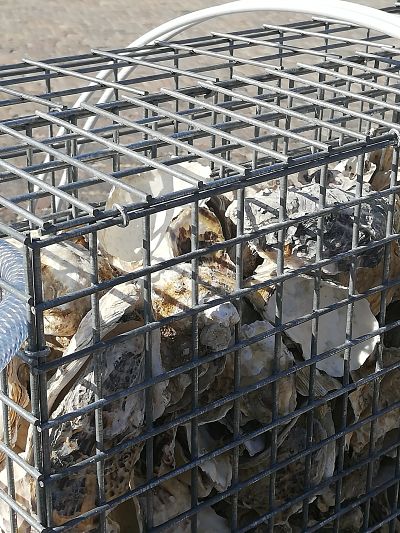A WWF collab to create more life in the harbor
On September 9th 2021, Stromma - in close collaboration with WWF (World Wildlife Fund) - put 20 Biohuts in the harbor of Copenhagen to contribute to the biodiversity. And what are Biohuts? Well, they are underwater fish hotels/nurseries for both small fish and juvenile fish. The sheltering function of the Biohuts increases the survival rate and population of the fish, as small fish can live there and juvenile fish from bigger species can live there until they are bigger and stronger and thereby no longer serve as food for predators outside the safe walls of the biohuts.
Creating protected habitats
Biohuts are steel cages, however even though they look a bit like underwater prisons, they don’t trap the small fish, but they keep the big fish out. The Biohuts work as a pantry, a canteen, and a safe haven for small fish in their vulnerable stage of life.
In man-made environments as the Copenhagen harbor, you often see the vertical sheet pile wall, which lacks the complexity and depth that is otherwise the basis for underwaterlife to flourish. When you install Biohuts, you create what experts’ call biological niches, which can become hotspots for life. By providing a safe space for small fish to live and grow the Biohuts contribute to an increased population, a better harbor environment, and an increased biodiversity.
The Biohut – how does it work?
The exterior steel cage protects the young fish with a size of up to 3 centimeters against larger predators, while the inner chamber provides the fish with food. The chamber inside is filled with clean, empty oysters and the complex exterior sets perfect conditions for algae and small organisms to grow, and this way the fish can both feed on the oyster and on the algae and small organisms.
The Biohuts are installed approx. 20-50 centimetres below the surface of the water in locations where no one swims and where they won’t get in contact with boats etc.

Positive and fast impact
Biohut-projects are found in several locations in the world, particularly in the Mediterranean. In Denmark, Biohuts can also be found in Aarhus, Helsingør, and Grenaa. Including the 20 Biohuts donated by Stromma, Copenhagen Harbor has a whopping 200 Biohuts in total!
From experience, we know that the fish move into the Biohuts straight away and as a result, one can expect a fast impact in the shape of increased biodiversity and in time also more fish. An increased fish stock can as well have a positive effect on the fish populations outside the harbors, as many fish species migrate over large areas.
Did Biohuts Boost Marine Life?
Yes! The Biohuts have had a great impact on the biodiversity in Copenhagen Harbor as they have created oases of life, and promoted a richer and more diverse underwater environment. Since the first Biohuts were installed in 2021, various fish species like blennies, pipefish, and even the critically endangered eel have been observed.
Learn more about the project here.
Stromma and WWF Denmark have installed 20 Biohuts in the Copenhagen Harbor, divided between two locations: Frederiksholm’s Canal by BLOX and just north of the Royal Acting House by Ofelia Square.


